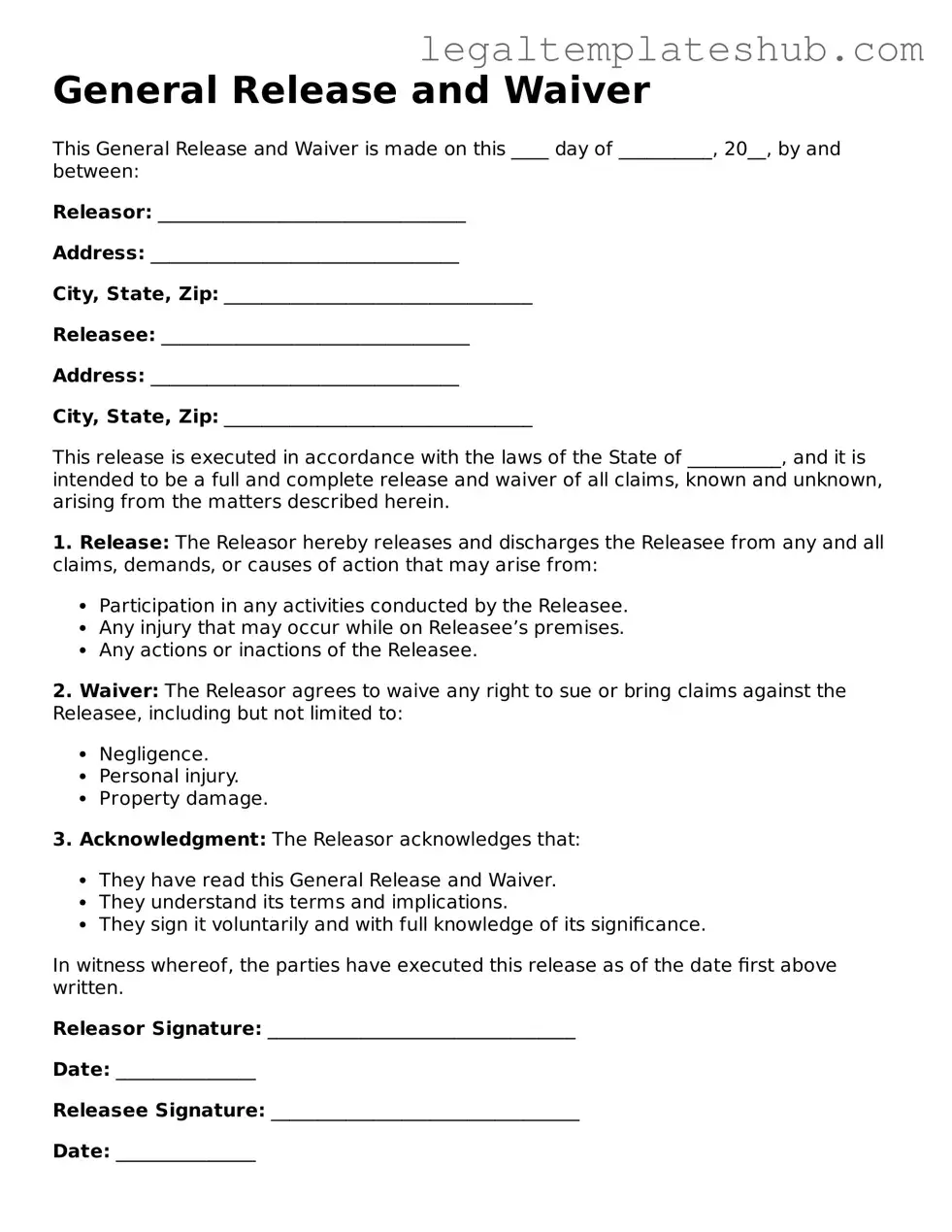Instructions on Filling in General Release and Waiver
After obtaining the General Release and Waiver form, it is important to complete it accurately to ensure that all necessary information is included. The following steps will guide you through the process of filling out the form.
- Begin by reading the entire form carefully to understand its requirements.
- In the first section, enter your full name as it appears on your identification.
- Next, provide your contact information, including your address, phone number, and email address.
- In the designated area, specify the date when you are filling out the form.
- Fill in any additional information requested, such as the name of the organization or event related to the waiver.
- Sign the form in the appropriate section, ensuring your signature is clear and legible.
- Date your signature to indicate when you completed the form.
- If required, have a witness sign the form in the designated area.
- Make a copy of the completed form for your records before submitting it.
Once the form is filled out, it should be submitted according to the instructions provided, whether that is electronically or by mail. Ensuring that all steps are followed will help in processing your request smoothly.
